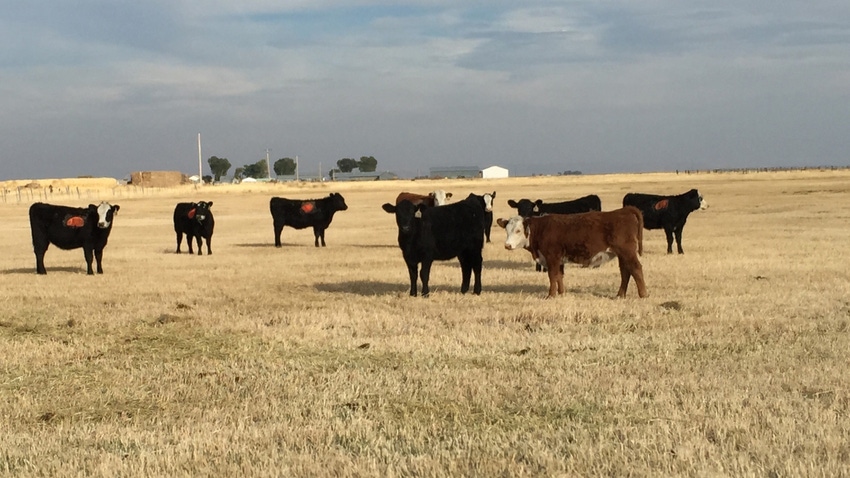
Experts drew on a century of knowledge of the complex landscapes and seasonal rhythms of the Inland Pacific Northwest for a new year-round guide meant to boost the health and productivity of the region’s pastureland.
Twenty-one scientists from three land-grant universities—Washington State University, the University of Idaho, and Oregon State University—as well as the U.S. Department of Agriculture’s Natural Resources Conservation Service (NRCS) worked together to develop the Inland Pacific Northwest Pasture Calendar.
“By following this calendar, producers will have more control and more destiny over what happens on their pasture lands,” said Steve Fransen, emeritus WSU forage and state extension agronomist and lead editor for the guide. “They’ll know what to expect when things go right, and if things aren’t working, they’ll know why and what to do. They can go from reactive to proactive.”
Aimed at farmers, conservationists, agriculture professionals, and other stakeholders, the 140-page guide breaks the annual growth pattern down by two-week intervals, helping growers understand and manage their irrigated, rain-fed, dryland, or range pastures.
Covering 14 unique landscapes that range from irrigated plateaus to high mountain meadows, the calendar walks readers through 10 distinct growing periods across the year, predicting how plants grow and change. Appendix chapters help producers fine-tune their management and decision-making process.
“To our knowledge, this is the first time such a calendar has been developed for cool season grasses for the inland Pacific Northwest,” said contributor Mylen Bohle, extension agronomist for Oregon State University. “Steve led us through a thought-provoking, challenging, and very satisfying project to define what is happening to the roots and top growth of cool season grasses in the different land resource areas of inland Idaho, Oregon and Washington.”
Equipped with the calendar, pasture managers can improve productivity while preventing adverse impacts to the environment, livestock, and wildlife. Chief among the beneficial practices is maintaining healthy pastures through proper grazing.
Preventing overgrazing
“We’re adamant about preventing overgrazing,” Fransen said. “Nobody wins when we overgraze.”
Overgrazing or cutting pastures too short can cripple the productivity of pastures.
“It doesn’t allow forages to recover as quickly for your next grazing or cutting,” Fransen said. “Instead of being huge and robust, root systems become minuscule when you overgraze.”
Forage diversity, flexibility in moving livestock, and managing pasture and livestock based on the life cycle of pastures help minimize economic risk for producers.
“Growers know their operation and their land,” Fransen said. “They can tailor our calendar to use what works for them. But if they use the practices we recommend, they will make money in addition to gaining all of the environmental and agronomic benefits.”
“This project perfectly illustrates that the land-grant mission is thriving in the Inland Northwest,” said contributor Don Llewellyn, a livestock specialist and director of WSU Lincoln County Extension. “We worked across state lines and institutions to create information that’s relevant to our clientele. I am really proud of what we accomplished.”
Team of scientists
Additional contributors include WSU faculty members Tip Hudson, Rich Koenig, J. Shannon Neibergs, and Steve Norberg; current and former at Oregon State University researchers Sergio Arispe, Mylen Bohle, Scott Duggan, Ian McGregor, K. Christy Tanner, and Guojie Wang; current and former University of Idaho scientists, K. Scott Jensen, Joseph Sagers, Glenn Shewmaker, Carmen Willmore, and Ashlee Westerhold; and NRCS scientists Brendan Brazee, Richard Fleenor, Amanda Moore, and Ian Reid.
The Inland Pacific Northwest Pasture Calendar is available free for download from the WSU Extension Online Bookstore.
Growers and other potential users are invited to a stakeholder meeting on Wednesday, May 1, at WSU’s Irrigated Agriculture Research and Extension Center at Prosser, Wash. The meeting will introduce the calendar and offer advice on how to use it.
To learn more, contact Steve Fransen, WSU Forage Crops Specialist, at [email protected] or Don Llewellyn, Lincoln County Extension Director, at [email protected].
Released this spring, the calendar was funded by the Western Sustainable Agriculture Research and Education Program. Work began in 2020 following release of a similar calendar for the growing regions west of the Cascades.
Source: Washington State University
About the Author(s)
You May Also Like




